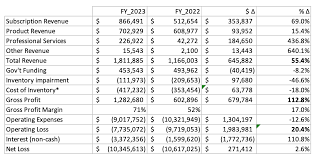Year's final supermoon rises Thursday

Summer is officially underway in the Northern Hemisphere, and the new season will kick off with a full moon unlike any other until next June.
As the sun sets on Thursday evening, not only will the first full moon of summer appear in the southeastern sky, but it will also be the final supermoon of 2021.
The term supermoon may be sounding old for some stargazers as it is the third in as many months. Supermoons always come in groupings like this, and anyone that misses the one rising on Thursday night will need to wait until June 14, 2022, to spot another one in the sky.
There is more to a supermoon than just a viral nickname.
As the moon orbits the Earth, there are times when it is a bit closer to the Earth, called perigee, and times when it is a bit farther away, called apogee. When the full moon occurs when the moon is near perigee, it appears slightly bigger and brighter than normal, making it a supermoon.
Apart from supermoons, every month's full moon has a different nickname based on the weather, the behavior of animals or the changes in plants that typically occur during the month.
These nicknames often date back hundreds of years to the colonial Americans that came as settlers from Europe or the Native Americans.
June's full moon is often called the Strawberry Moon as it is the time of year when strawberries ripen across the northeastern United States, according to the Old Farmer's Almanac.
Other nicknames for June's full moon include the Hot Moon, the Blooming Moon, the Egg Laying Moon and the Green Corn Moon.
Combining these nicknames, some are referring to this month's full moon as the "Super Strawberry Moon," although it will look similar to other full moons throughout the year and will not appear red like a ripe strawberry.
The night sky in late June has plenty more to offer than just a supermoon.
Just after the sun sets and the sky starts to go dark, people will be able to spot Venus to the northwest low on the horizon.
Venus will stand out in the sky as it appears to be much brighter than any other planets or stars, but it will not be visible all night. To see Earth's celestial neighbor, onlookers will need to gaze at the western horizon before 11 p.m., local time.
Saturn and Jupiter will also appear in tandem after midnight, local time, shining side-by-side in the southeastern sky.
 Jupiter and Saturn will be visible in the sky during the second half of the night in the southern sky. Image courtesy of NASA
Jupiter and Saturn will be visible in the sky during the second half of the night in the southern sky. Image courtesy of NASA
The two planets were a prominent pairing throughout most of 2020 with Jupiter glowing to the right of Saturn. This year, their roles are reversed with Jupiter shining to the left of Saturn.
The best time to look for these planets will be on the nights of Sunday, Monday and Tuesday when the moon swings by the duo. No telescope is required to see the planets, but with the moon nearby, the three nights will be three great opportunities to set up a telescope.




 United Kingdom
United Kingdom Argentina
Argentina  Australia
Australia  Austria
Austria  Brazil
Brazil  Canada
Canada  Germany
Germany  Ireland
Ireland  Italy
Italy  Malaysia
Malaysia  Mexico
Mexico  New Zealand
New Zealand  Poland
Poland  South Africa
South Africa  United States
United States 






















